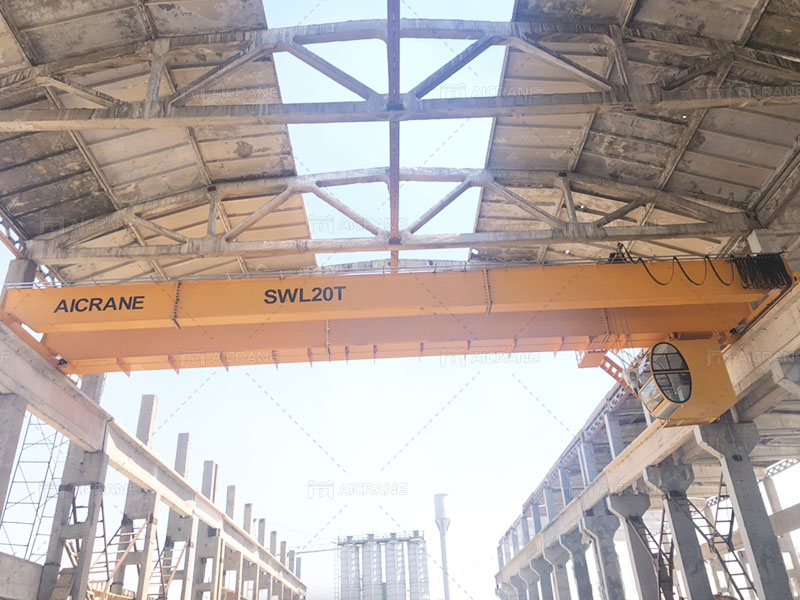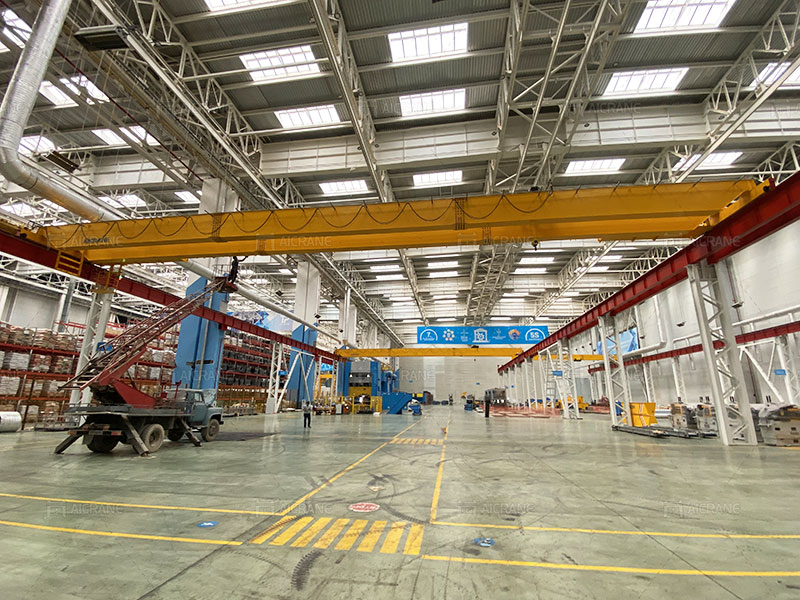Overhead cranes are essential for lifting and transporting heavy loads across various industries, including manufacturing, construction, logistics, and even the marine sector. The relationship between crane capacity and price is a crucial consideration for buyers seeking to optimize their investment. Generally, as the lifting capacity of an overhead crane increases, so does the price. However, several other factors play a role in determining the overall cost, and understanding these can help businesses make informed purchasing decisions.
In this article, we will explore how crane capacity impacts pricing, what factors influence crane costs, and how businesses can select the right overhead crane for sale for their needs while keeping costs within budget.

Understanding Overhead Crane Capacity
Before delving into the relationship between crane capacity and price, it is important to first define what we mean by crane capacity.
The lifting capacity of an overhead crane refers to the maximum weight it is designed to lift and transport. It is typically measured in tons and is one of the most important specifications when choosing a crane. Cranes are available in a wide range of capacities, from light-duty models that can lift up to 1 ton, to heavy-duty cranes capable of handling several hundred tons of weight.
A crane’s capacity is usually determined by the following factors:
- Design and Materials: The size and strength of the crane’s components, including the girders, hoists, and structural elements.
- Motor and Power Systems: The power rating of the crane’s motor will affect its lifting ability.
- Structural Reinforcement: Heavy-duty cranes often require reinforced frames and parts to support larger loads.
How Crane Capacity Affects Price
It is generally true that as the crane’s lifting capacity increases, the overhead crane price also increases. This price fluctuation can be explained by several key factors:
1. Material and Manufacturing Costs
A crane with a higher lifting capacity requires more materials in its construction. Larger, stronger components are needed to support the increased load, including larger girders, hoists, pulleys, and cables. These parts need to be fabricated from high-quality materials, such as steel or high-strength alloys, which contribute to the higher cost.
Additionally, manufacturing overheads rise as the complexity of the crane increases. Heavy-duty cranes are often custom-designed to meet specific requirements, and the production process for such cranes can be more intricate and time-consuming. Customizations, such as specialized hoists, motors, and safety features, add to the overall production cost.
2. Power and Efficiency
Cranes with higher lifting capacities require more powerful motors to generate the necessary torque for lifting heavy loads. This often translates to larger and more expensive power systems. Additionally, energy-efficient systems may be incorporated into the design to minimize power consumption during operation. These advanced motor systems, combined with improved control mechanisms, can significantly impact the price of the crane.
3. Structural Reinforcement
For cranes with higher lifting capacities, additional structural reinforcement is necessary to prevent damage or failure during lifting operations. This involves thicker beams, stronger joints, and more robust supporting structures. The cost of these reinforcements is reflected in the final price.
4. Safety Features and Technology
Safety is paramount in heavy-duty lifting operations, and larger cranes often come equipped with advanced safety features. For instance, overload protection, sway control, and load monitoring systems are more commonly found in cranes with high capacities. Additionally, these cranes may include advanced technology such as automated control systems, anti-collision sensors, and remote operation capabilities. All of these features increase the price of the crane but are necessary to ensure safe and efficient operations.

Other Factors Influencing Overhead Crane Price
While crane capacity is a significant factor influencing price, it is not the only consideration. Other factors that can affect the cost of an overhead crane include:
1. Customization and Special Features
Crane manufacturers often offer customization options based on the specific needs of a business. This may include custom lifting heights, span lengths, and travel distances. In addition to the basic capacity, buyers may require specialized features such as weather protection for outdoor use, explosion-proof components for hazardous environments, or special lifting mechanisms for particular loads. These customized features can increase the EOT crane price significantly.
2. Crane Type
There are several types of overhead cranes, each with varying price points. For example:
- Single Girder Cranes: These are generally less expensive due to their simpler design and lighter lifting capacity. They are ideal for smaller lifting tasks, typically ranging from 1 to 10 tons.
- Double Girder Cranes: These cranes are designed for higher capacities and are typically more expensive. They are capable of lifting heavier loads, typically in the range of 10 to 500 tons, depending on the design and usage.
- Jib Cranes and Gantry Cranes: Other specialized crane types may come with different price tags based on their structure, mobility, and intended use.
3. Work Duty Classification
Cranes are classified based on their work duty, which refers to the intensity and frequency of operations. Cranes designed for high-frequency or heavy-duty operations, such as those in steel mills or large factories, will generally be more expensive than those intended for light-duty tasks. The work duty classification considers factors like load frequency, speed, and duration of use. More durable components and higher-grade materials are necessary for cranes with higher work duty ratings, which adds to their price.
4. Installation and After-Sales Services
The cost of installing an overhead crane can vary based on its size and complexity. Larger cranes require more extensive installation procedures, including structural modifications to the building or facility, which can increase the overall cost. In addition, after-sales services, such as maintenance, warranty coverage, and training, may also impact the final price. Some manufacturers offer comprehensive after-sales packages that include regular inspections and upgrades, which can be an added expense.
Balancing Capacity and Price: How to Make the Right Choice
When selecting an overhead crane, it is important to balance capacity and price to meet both operational needs and budget constraints. Here are some steps businesses can take to ensure they make the right choice:
1. Assess Load Requirements
Before purchasing a crane, businesses should carefully assess their load requirements. Overestimating the necessary lifting capacity will lead to unnecessary costs, while underestimating the capacity could result in safety issues or the need for costly upgrades later. Conducting a thorough evaluation of the maximum weight of the loads to be lifted and considering future needs will help determine the most appropriate crane capacity.
2. Consider Long-Term Use and Efficiency
Investing in a double beam overhead crane with a higher capacity than initially required may seem like an unnecessary expense, but it could pay off in the long term by increasing operational efficiency and reducing the need for future upgrades. Additionally, choosing a crane that incorporates energy-efficient technologies may reduce operating costs over time, offsetting the higher initial price.
3. Consult with Experts
For businesses that are unsure about the right crane capacity or type, consulting with crane manufacturers or suppliers can help guide the decision-making process. Manufacturers can provide insights into the best crane options based on the intended application, facility layout, and load specifications. Additionally, experienced suppliers can recommend cost-effective solutions that still meet safety and efficiency standards.
Conclusion
In summary, the relationship between overhead crane capacity and price is influenced by several factors, including the materials used in construction, the crane’s power systems, structural reinforcements, and safety features. While a higher crane capacity generally leads to a higher price, other considerations such as customization, crane type, and work duty classification also impact the final cost.
By understanding these factors and evaluating their specific needs, businesses can select an overhead crane that offers the best value for money, balancing both capacity and price. In the end, the right crane not only meets immediate operational requirements but also provides long-term efficiency and safety, making it a wise investment for the future.